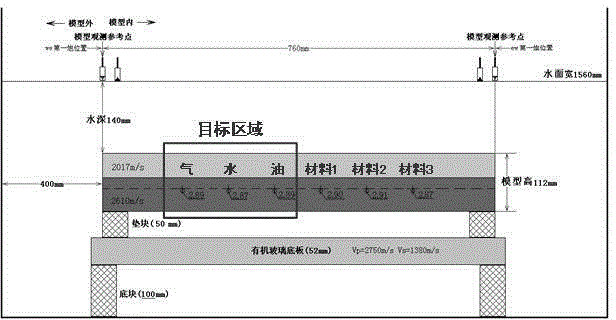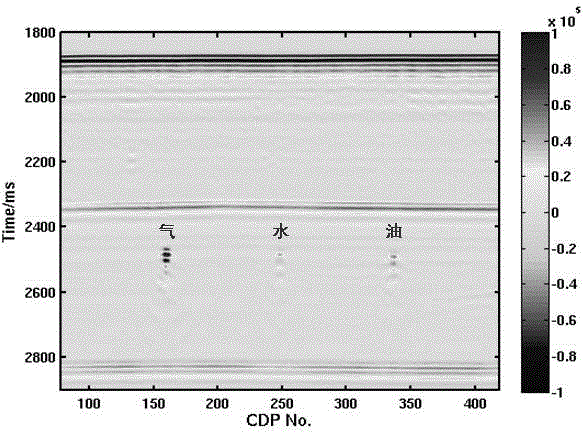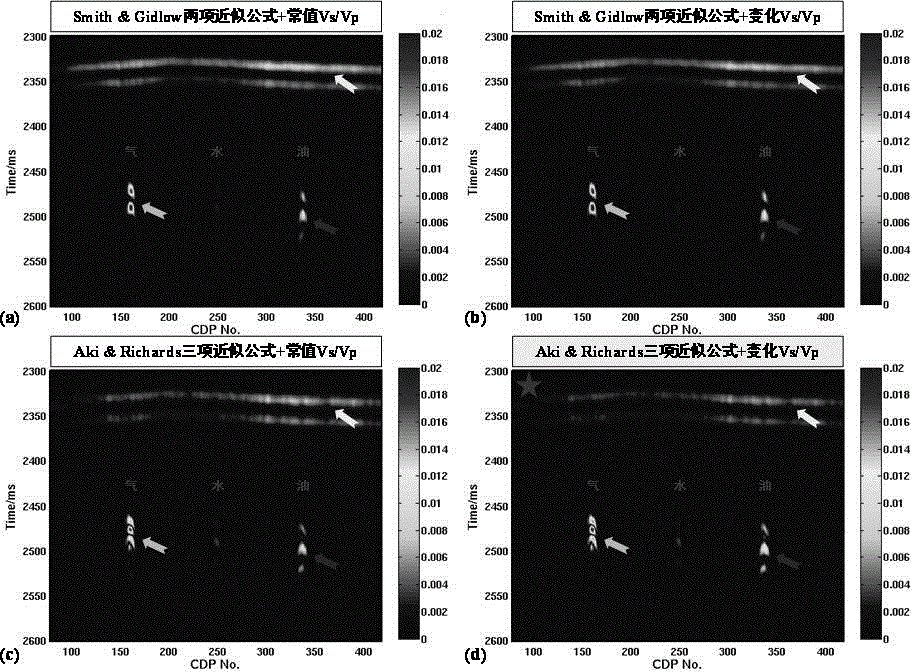Fluid identification method based on three-term frequency dependence AVO inversion
A fluid identification and inversion technology, which is applied in the field of petroleum exploration, can solve the problems of inability to identify reservoirs and non-reservoirs by fluid type, and the rate of change of P-wave velocity is not accurate enough, so as to achieve the effect of accurate and reliable fluid identification
- Summary
- Abstract
- Description
- Claims
- Application Information
AI Technical Summary
Problems solved by technology
Method used
Image
Examples
Embodiment Construction
[0035] A fluid identification method based on three-term frequency-dependent AVO inversion provided by the present invention, its specific implementation is as follows:
[0036] Step 1: Perform amplitude-preserving processing on the seismic data, and extract amplitude-preserving angle gathers;
[0037] Step 2: Superpose the amplitude-preserving angle gather obtained in step 1 by angle to form near, middle and far angle superposition data;
[0038] Step 3: Use the rearranged Gabor transform with high time-frequency resolution to perform time-frequency analysis on the near, middle and far sub-angle superposition data obtained in step 2, extract the frequency-division data and perform spectral equalization;
[0039] Step 4: Perform pre-stack AVO inversion on the near-, mid-, and far-angle stacked data volumes obtained in Step 2 to obtain the shear-to-pillar velocity ratio Vs / Vp that varies with sampling points;
[0040] Step 5: Use the frequency-division data obtained in Step 3 ...
PUM
 Login to View More
Login to View More Abstract
Description
Claims
Application Information
 Login to View More
Login to View More - R&D
- Intellectual Property
- Life Sciences
- Materials
- Tech Scout
- Unparalleled Data Quality
- Higher Quality Content
- 60% Fewer Hallucinations
Browse by: Latest US Patents, China's latest patents, Technical Efficacy Thesaurus, Application Domain, Technology Topic, Popular Technical Reports.
© 2025 PatSnap. All rights reserved.Legal|Privacy policy|Modern Slavery Act Transparency Statement|Sitemap|About US| Contact US: help@patsnap.com



